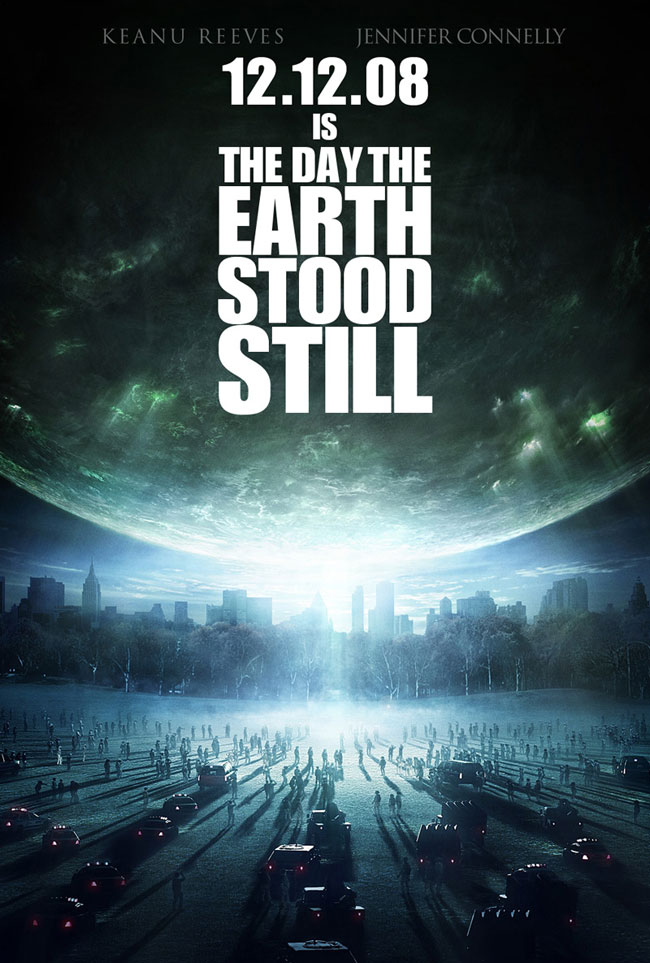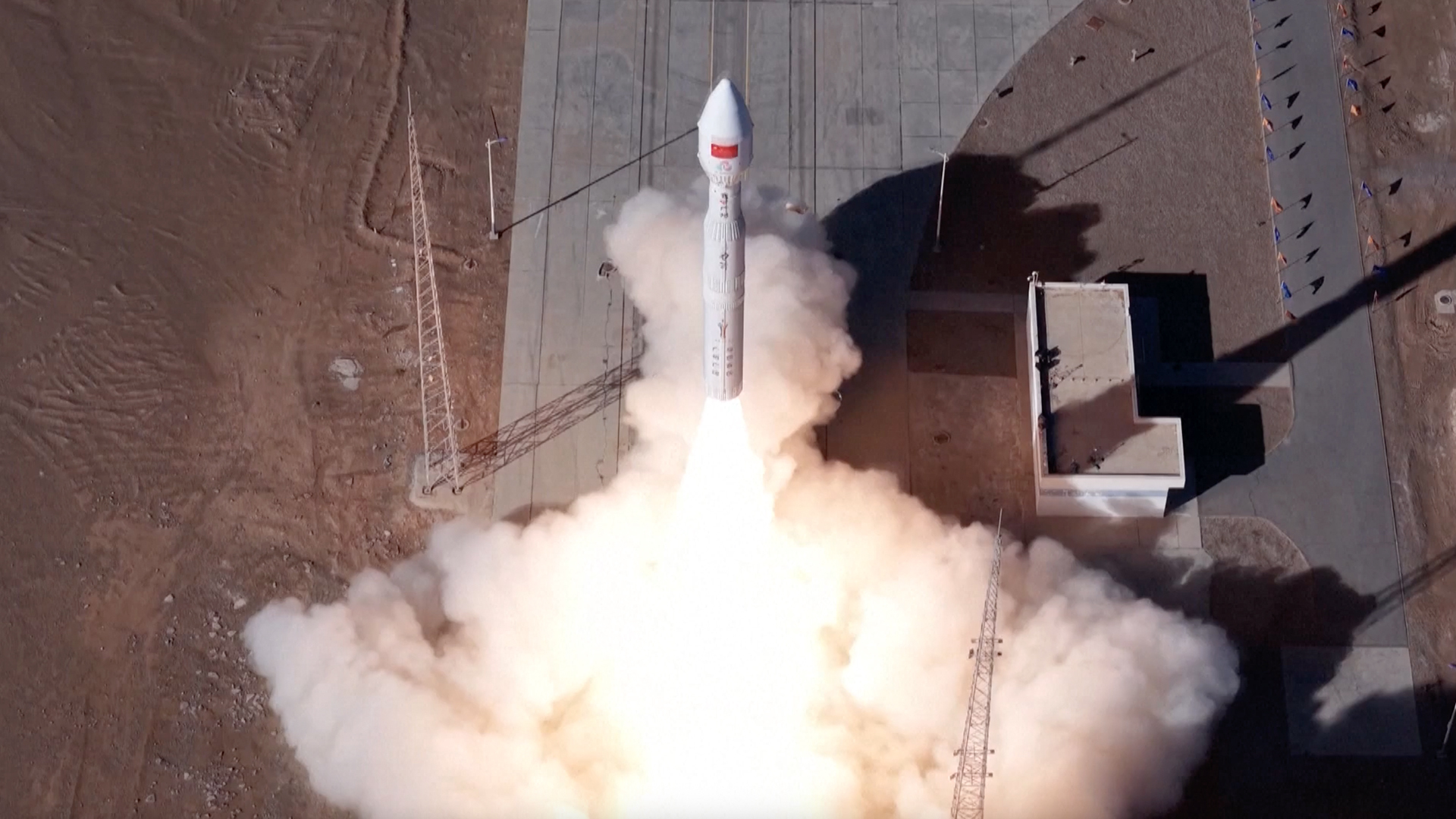'The Day the Earth Stood Still' Remake Goes Green

NEW YORK -- If aliens ever visit Earth, they'll be coming to reprimand us for bad behavior.
That's the premise of the 1951 classic sci-fi film "The Day the Earth Stood Still," as well as the brand-new Fox remake of the same name, in theaters Friday. In the intervening 50 years, humanity hasn't gotten any better, the filmmakers seem to conclude -- we've just switched to new transgressions.
In the mid 20th century our most pressing concern about ourselves was the threat of humans annihilating each other with nuclear weapons. The original film follows Klaatu, a human-looking alien who comes to Earth with his bodyguard robot Gort, to warn people to cease and desist with the nukes before we contaminate the rest of the Galaxy with them.
The new version of the film focuses on a more contemporary preoccupation: the threat of climate change and environmental degradation. The new Klaatu, played by Keanu Reeves, couldn't care less if we blew ourselves to bits, but would we mind not taking out the rest of the species on Earth, as well as our rare habitable planet, with us?
The concept of the film wasn't the only part of the movie to receive an overhaul: The science behind "The Day the Earth Stood Still" gets a welcome re-imagining, too. Klaatu, Gort, their spaceship and weapons were all modernized, and the film features an impressive arsenal of CGI graphics.
To top it all off, Fox plans to transmit the movie via radio dish as the first motion picture broadcast into deep space.
Alien arrival
Breaking space news, the latest updates on rocket launches, skywatching events and more!
One of the biggest differences between the original and the new film is the way in which the aliens arrive on Earth. In the 1951 version Klaatu and co. step off a metallic saucer-shaped spaceship. In the new movie, the ship looks more like a mini planet -- a huge glowing sphere of swirling gases. Though probably no more or less plausible than a flying saucer, the sphere does have a more organic, otherworldly feel.
In nice stroke of plotting, the filmmakers come up with a reasonable explanation for why Klaatu looks human: He's really an entity made of light, and decides to visit Earth in human form to experience life the way the locals do! He comes in a gooey womb-like bio-suit which incubates him for a while before peeling off to reveal Keanu Reeves. If this still sounds hokey, remember that in the old version, Klaatu stepped off the ship fully formed in a silver nylon spacesuit.
The new Gort looks a lot like the old Gort, but bigger: a giant human-shaped metallic robot. To exterminate the unruly humans, Gort unleashes a scary swarm of mini-bots that look like metallic locusts. Watching the inept humans repeatedly try to kill and restrain Gort while he survives unscathed provides some of the movie's funniest scenes.
Real-life angst
To call off Gort, it falls to astrobiologist Helen Benson (Jennifer Connelly) and her stepson Jacob (Jayden Smith, son of Will Smith) to convince Klaatu that humans aren't beyond redemption, that we really can change our gas-guzzling, trash-dumping ways.
"In re-imagining this picture, we had an opportunity to capture a real kind of angst that people are living with today, a very present concern that the way we are living may have disastrous consequences for the planet," Reeves said. "I feel like this movie is responding to those anxieties. It's holding a mirror up to our relationship with nature and asking us to look at our impact on the planet, for the survival of our species and others."
In a sign of its own commitment to change, Fox designated "The Day the Earth Stood Still"as its first "green" production. Though some trees were doubtless harmed in the making of this film, the studio endeavored to produce the picture with the smallest possible environmental impact. That meant less paper printing of photo stills for the art department, the use of recyclable materials and biodegradable products to create sets and props, and lumber from sustainably-managed forests.
The studio even enforced an "idle-free mandate," whereby any member of the crew sitting in a production vehicle for more than three minutes had to cut the engine rather than idle while waiting.
Hello out there!
In another grand gesture, Fox plans to transmit the entire film into space on Friday via dish antenna through the Orlando, Fla.-based Deep Space Communications Network firm. In what the studio is calling "the world’s first galactic motion picture release," the movie will be broadcast in the direction of the closest star system, Alpha Centauri, where eager aliens waiting with popcorn could view it by 2012, when the signal arrives.
[Alpha Centauri is about 4 light-years away. The signal will travel at the speed of light.]
While it is fitting perhaps that the first film broadcast on purpose to outer space is about contact with an alien species, one must wonder whether we are really putting our best foot forward here. Instead of a movie based on our irresponsible treatment of the planet, couldn't we send something with a more flattering view of humanity -- Star Trek, perhaps?

Clara Moskowitz is a science and space writer who joined the Space.com team in 2008 and served as Assistant Managing Editor from 2011 to 2013. Clara has a bachelor's degree in astronomy and physics from Wesleyan University, and a graduate certificate in science writing from the University of California, Santa Cruz. She covers everything from astronomy to human spaceflight and once aced a NASTAR suborbital spaceflight training program for space missions. Clara is currently Associate Editor of Scientific American. To see her latest project is, follow Clara on Twitter.
